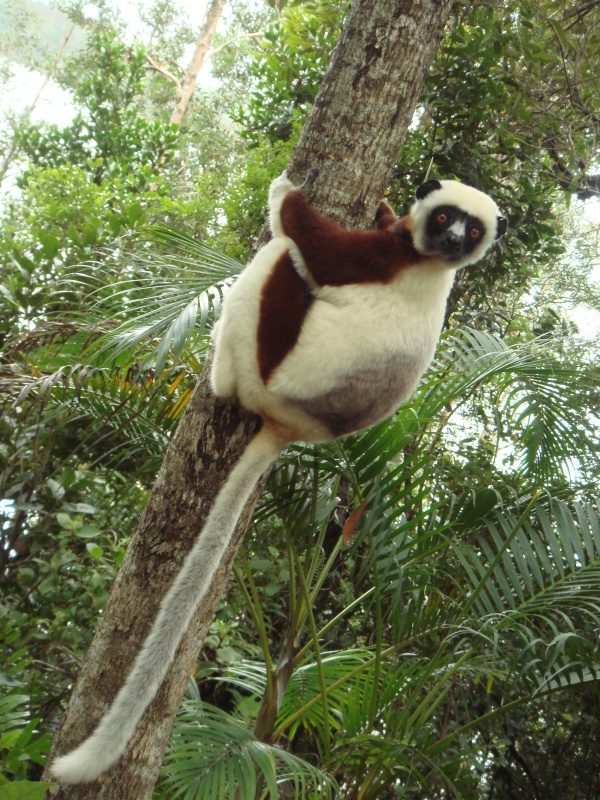Facts About Diademed Sifaka
Sifakas are a captivating species of lemur that belong to the genus *Propithecus*, part of the Indriidae family within the primate order. Endemic to Madagascar, these unique animals are easily identified by their distinctive "shi-fak" alarm call.
Medium-sized with fur that ranges from yellowish-white to blackish-brown, sifakas are distinguished by their characteristic black faces. They also possess specialized grooming tools, including a toothcomb and a grooming claw. As arboreal herbivores, sifakas spend most of their time in trees, moving gracefully by clinging to vertical surfaces and leaping—sometimes as far as 10 meters.
These social creatures live in groups and mark their territories using scent glands. Being diurnal, they are active during the day, constantly on the lookout for predators such as the fossa and birds of prey like hawks.
Sifakas have a gestation period of four to five months, typically giving birth to one baby in July. The mother carries the newborn, which reaches maturity at around two to three years of age. In the wild, sifakas can live up to 20 years.
Regarding classification, sifakas belong to the family Indriidae and the genus *Propithecus*, which includes various species such as the diademed sifaka, silky sifaka, and Coquerel's sifaka. Each species possesses its unique traits and preferred habitats within Madagascar.
